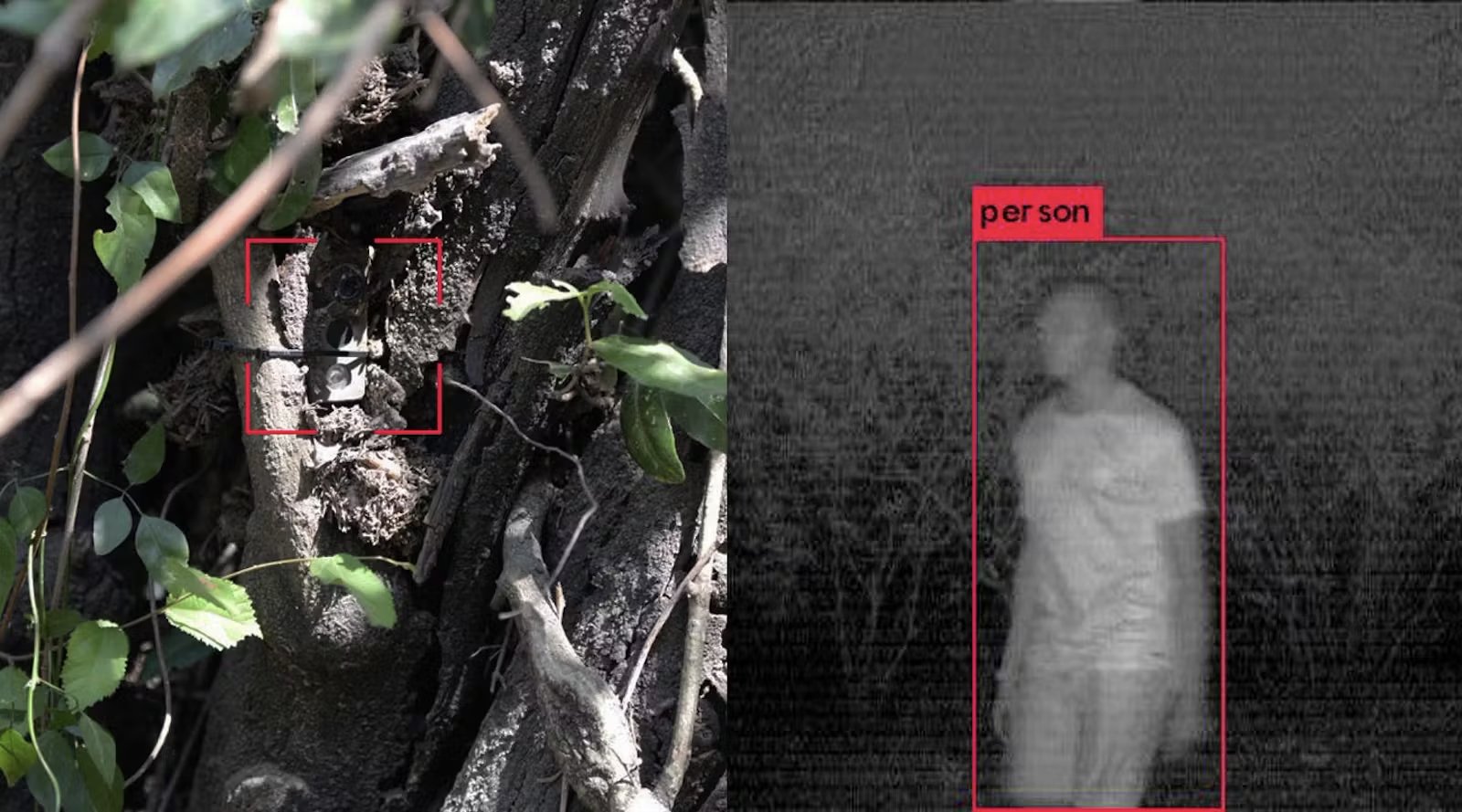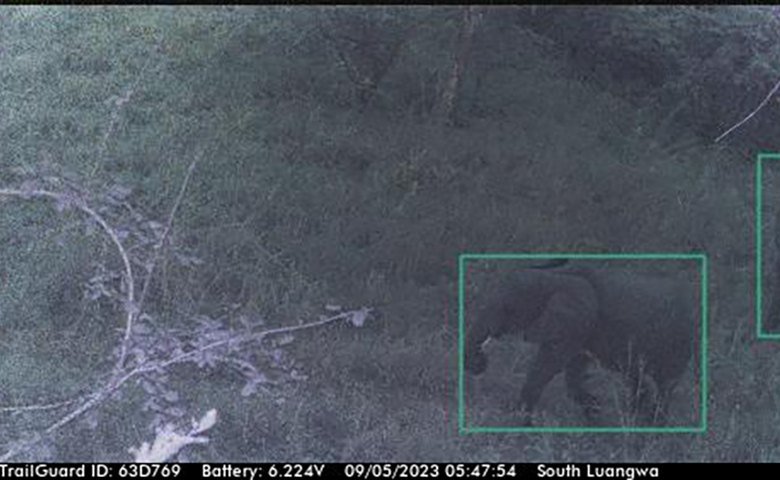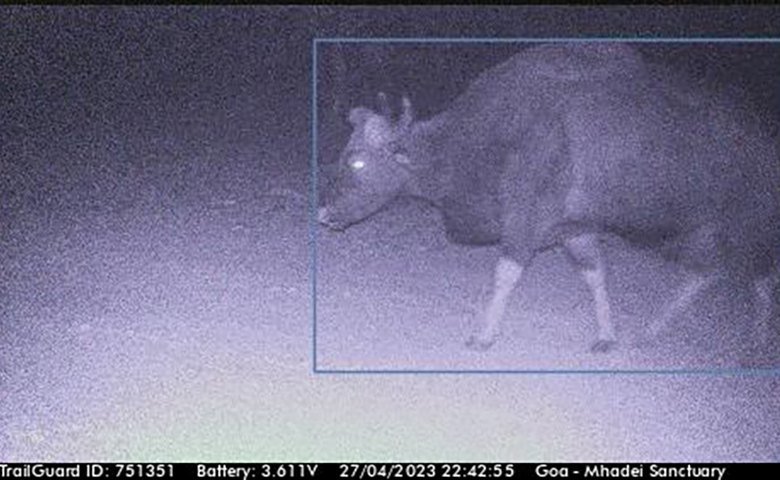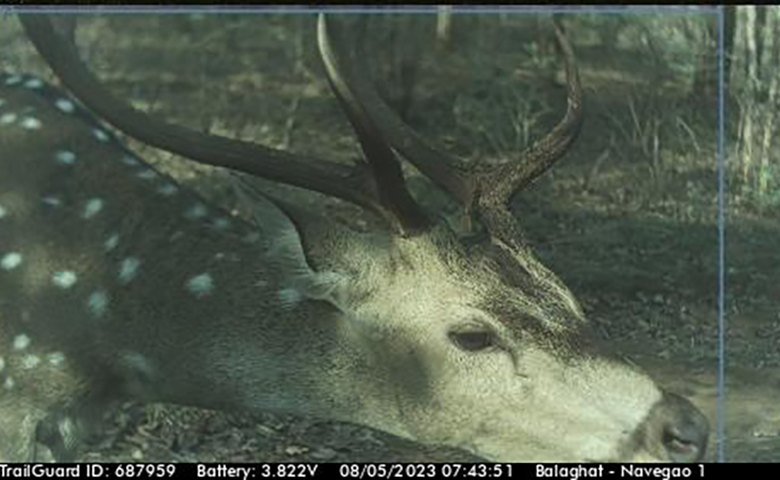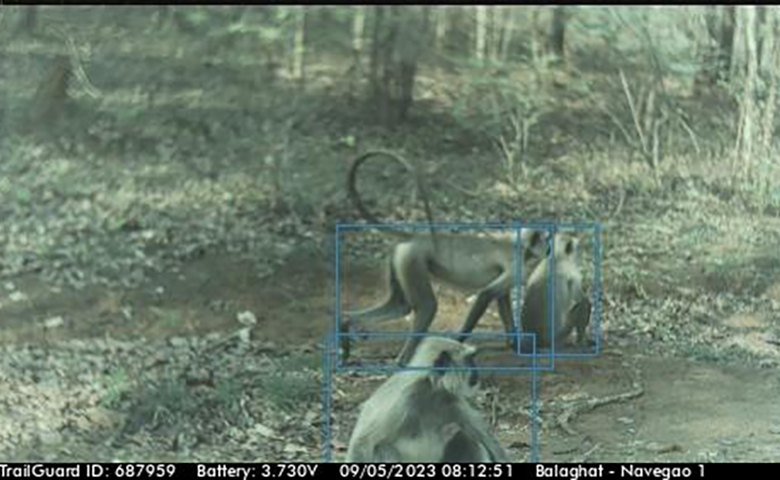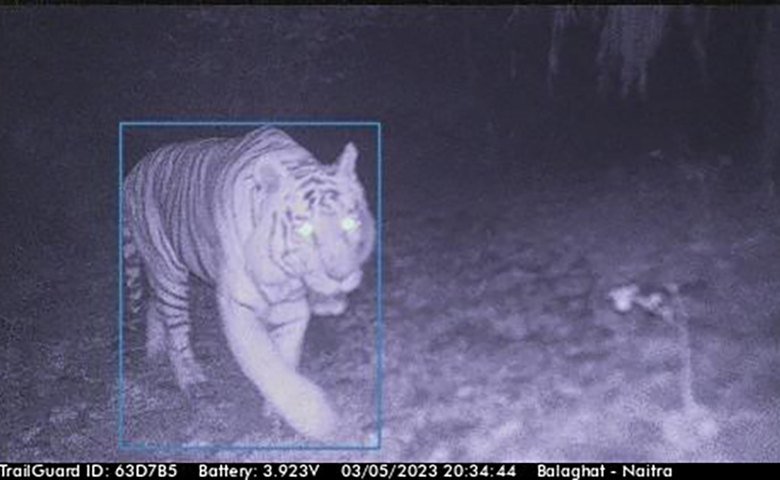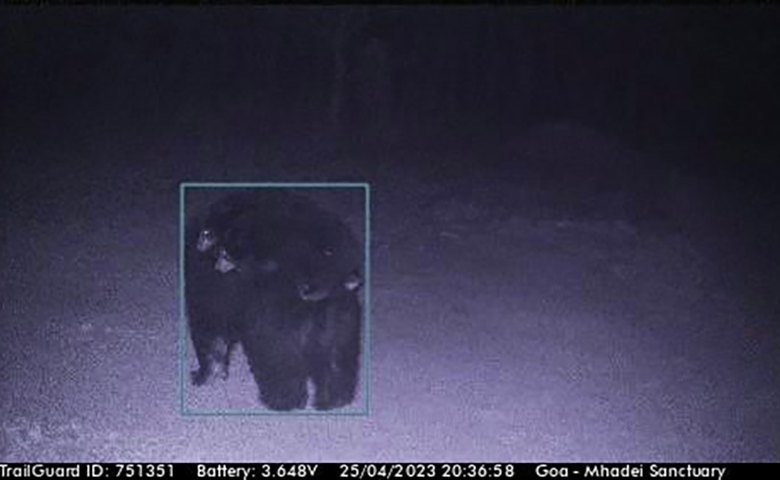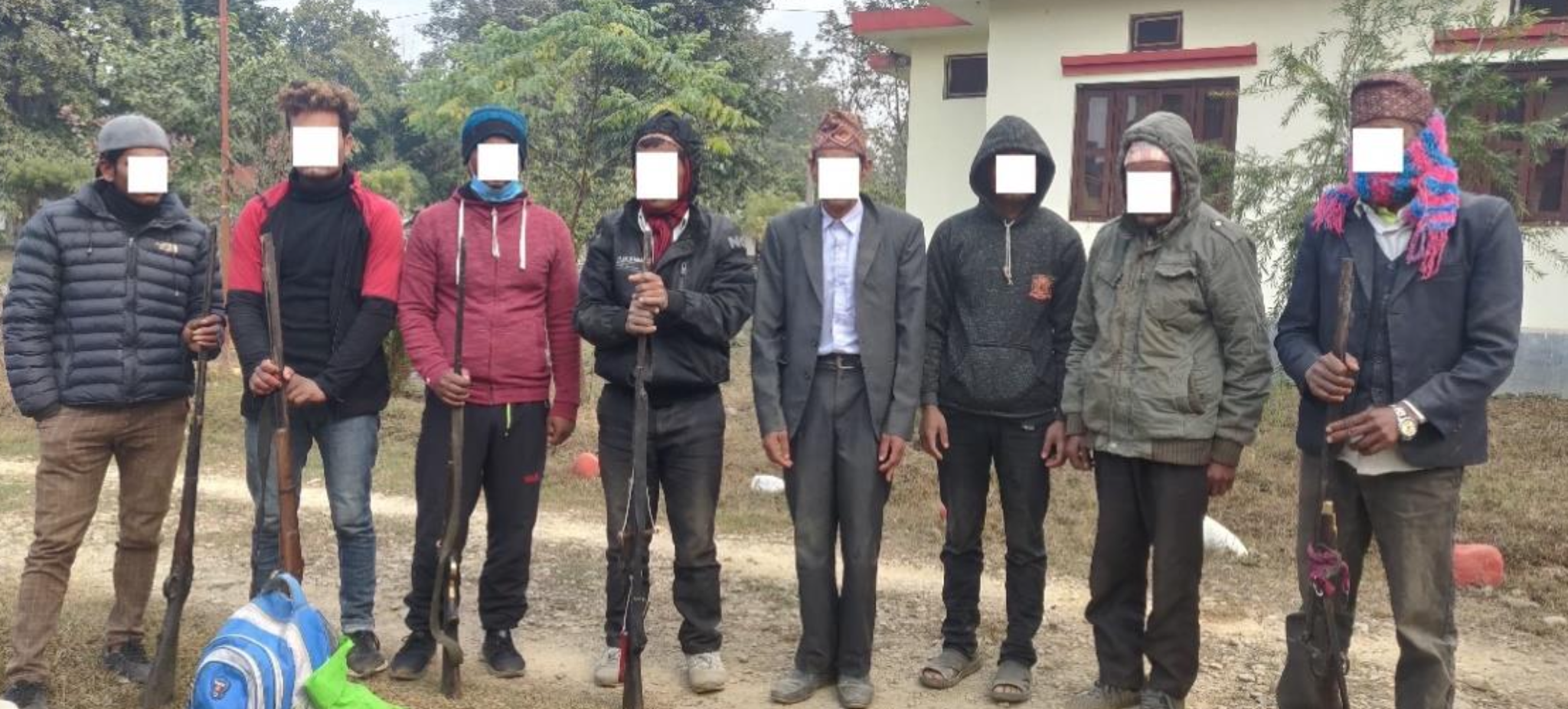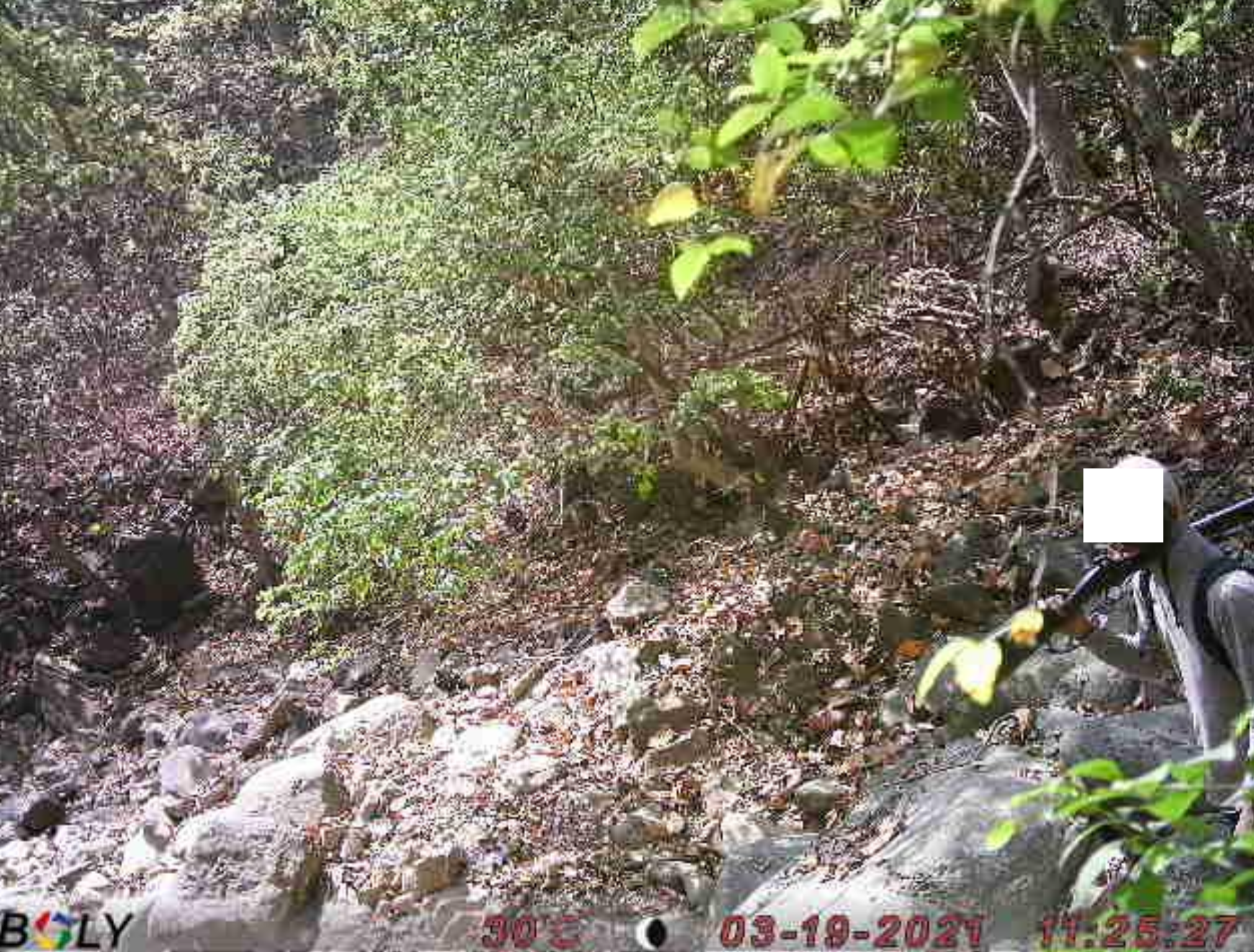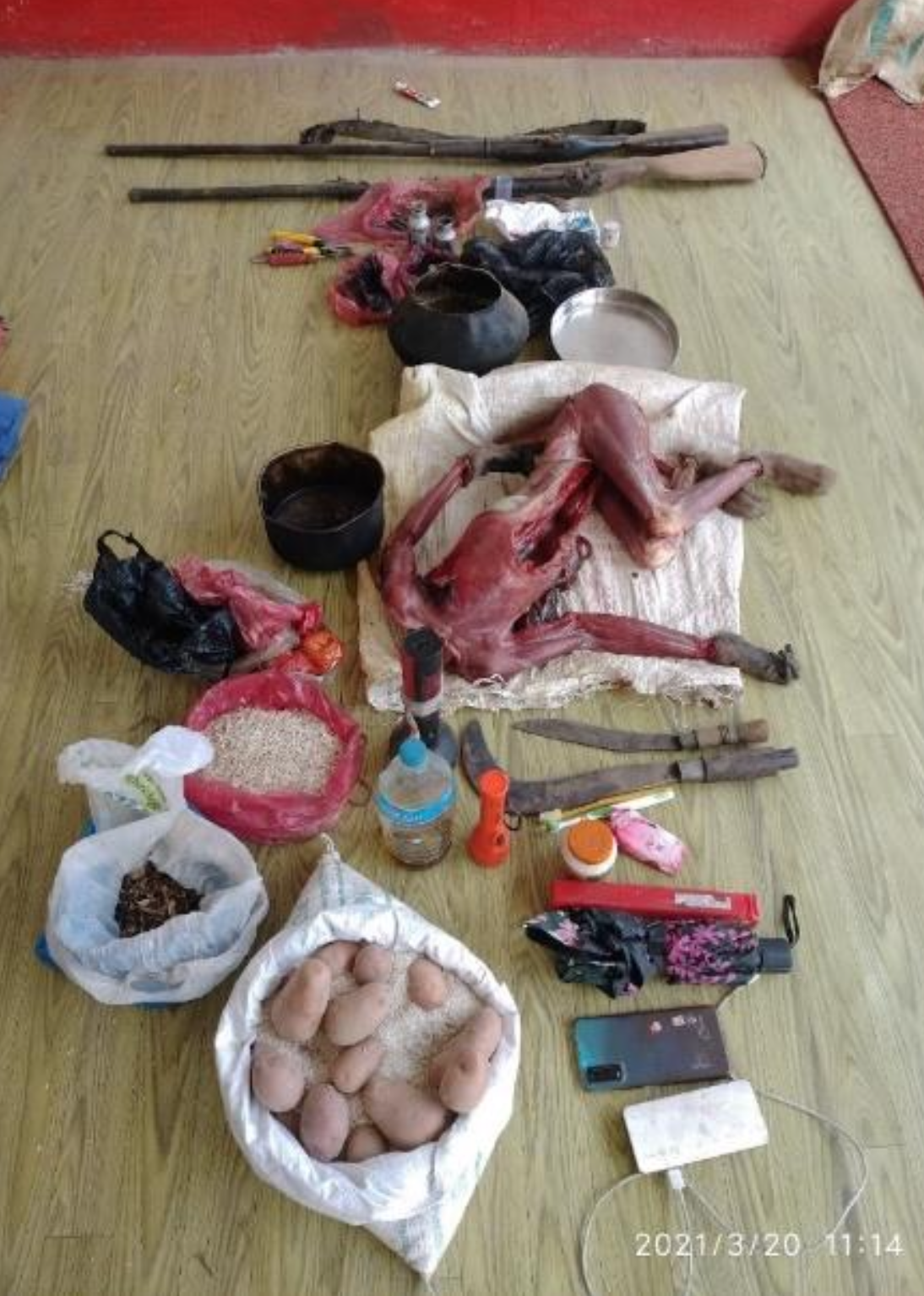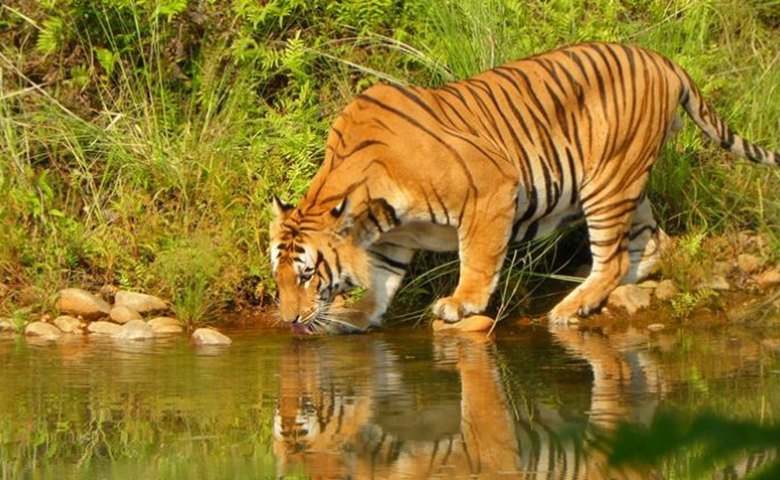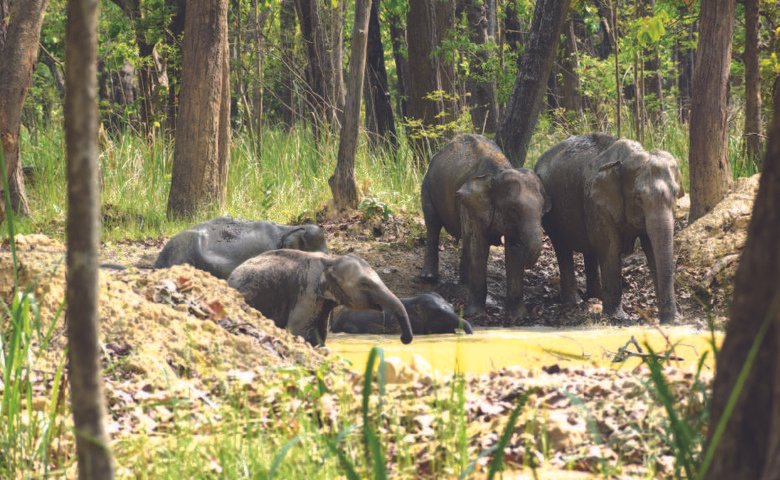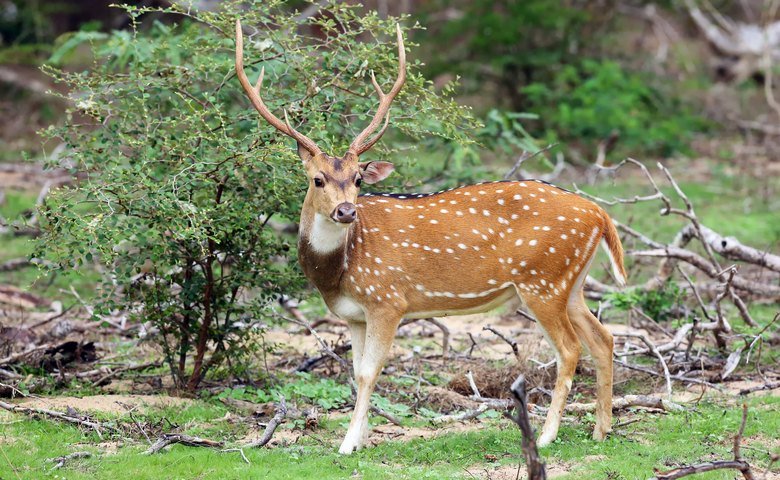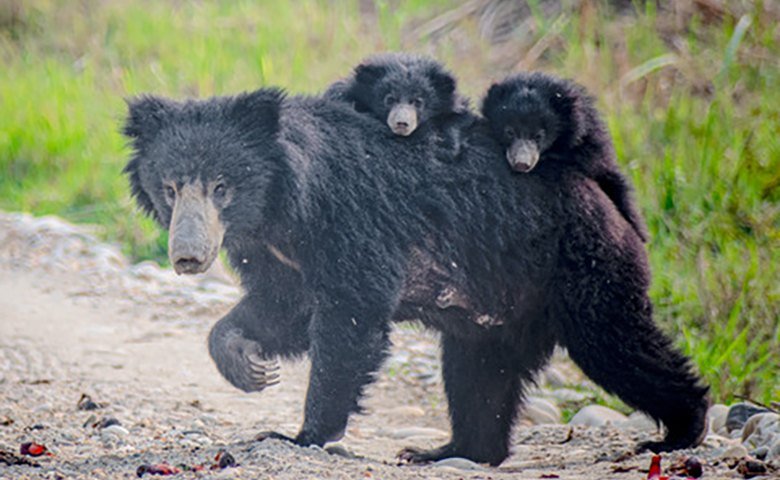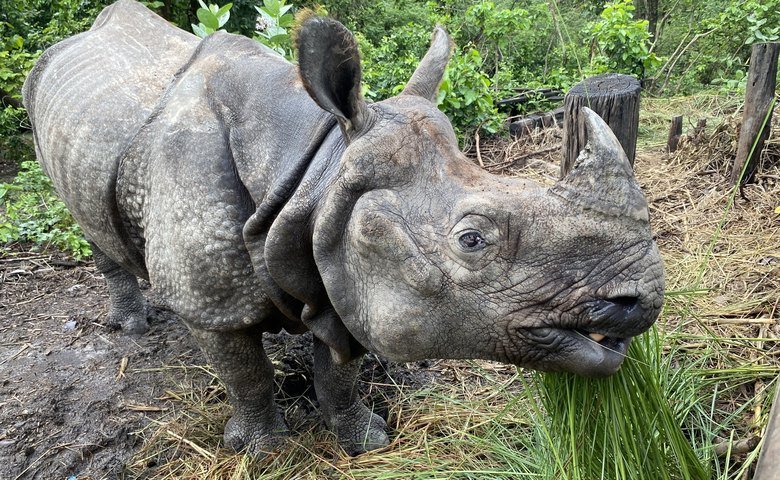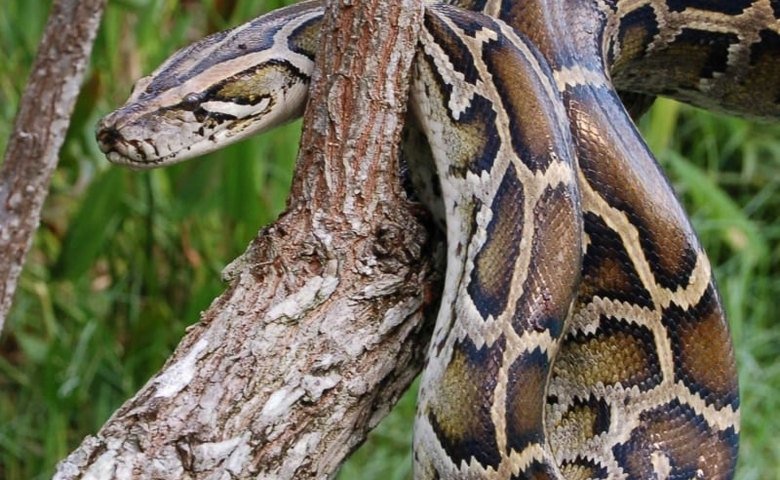Global Conservation Invests in Bardiya and Banke National Park and Wildlife Protection
Photo Credit © Patrice Correia | Dreamstime.com
GC Supports the Protection of Bardiya-Banke National Parks with ZSL Nepal
Home to critically endangered Royal Bengal Tigers, One-horned Rhinos, and Asian Elephants, Bardiya - Banke National Parks in Nepal continue to face the risk of professional wildlife poaching for high-value skins, tusks, and body parts, despite hundreds of conservation efforts undertaken by rangers and military wildlife protection personnel stationed in and around the park and comprehensive Community Protection programs.
Global Conservation's multi-year investment support in both Bardiya and Banke National Parks deploys Global Park Defense to help protect critically endangered rhinos, tigers, and elephants. Using advanced surveillance (cellular trailcams, UAV Drones, Satellite Forest monitoring, and park-wide communications), we work with Community Protection, integrating hundreds of local people to protect wildlife and forests in the National Park and surrounding community forestry concessions.
ZSL Nepal, our primary GC Partner in Conservation, has worked in Nepal for over 25 years and has more recently ramped up protection support for Bardiya and Banke National Parks with Global Conservation's support. It is now beginning a formal GC Project of $400,000 over 5 years. Rapid Response teams, long-distance patrolling, and forward camps throughout the National Parks are making a major positive impact. Still, in 2022, there were over 17 arrests for wildlife poaching in Bardiya and 7 arrests in the newly-created Banke National Park. Likely, there are still a remarkable number of active poachers working in small groups and syndicates to kill tigers, rhinos, elephants, and other game species inside the National Park.
Global Conservation is supporting ZSL Nepal’s critical work in park and wildlife protection by deploying Global Park Defense with real-time surveillance and rapid response teams focused on the highest threats areas in the national parks.
ZSL Nepal is providing critical systems, technologies, and training to improve the protection and enhance illegal wildlife crime control capacities as well as human rights concerns of Bardiya and Banke National Park Rangers and awareness raising on human-wildlife conflict of Community Based Anti-Poaching Units.
Initial funding from Global Conservation in 2021 has resulted in a number of successes that have identified critical threat areas and access points where gun-wielding poachers enter the national park to hunt key species.
As well, medium and long-range patrolling was made possible with new funding for advance camps, gear, patrol fuel and rations, and real-time SMART Patrolling equipment (computers, smartphones, and Cellular Trailcam networks) across the national parks.
Last year, GC support enabled over 3,200 miles of long-range patrolling and assisted in the arrest of 50 people in Bardiya and 32 people in Banke National Park on wildlife poaching charges.
In joint meetings this month in Nepal with Park Directors, military commanders, and ZSL Nepal, Global Conservation committed to a 4-year Global Park Defense Program to scale up initial successes in 2021-22.
New GC Funding Will Enable:
50+ strong Cellular Trailcam Networks
Real-time Response Anti-Poaching Units
Medium and Long-Range Patrolling
New AI-driven Image Recognition software to analyze all Trailcam photos in real-time of guns and poachers from throughout the parks.
Joint Operations Command Centers in both Bardiya and Banke National Parks
With nearly 40 poachers arrested last year, it is likely there may be hundreds of poachers and hunters outside the national parks ready to hunt key species and prey, especially in the Dry Season when animals concentrate on the last flowing rivers and remaining waterholes.
GC and Partner One Earth Invest Over $100K to Forward Trailcamera AI Recognition
To help the Rangers' anti-poaching efforts, we are pleased to announce the launch of TrailGuard AI, a revolutionary technology that has the potential to change the anti-poaching game. TrailGuard AI, which was developed in association with RESOLVE and Intel, makes use of developments in artificial intelligence to thwart poachers before they kill. A 24/7 electronic eyeball placed along known poacher tracks in Tanzania's Serengeti habitat was provided by earlier iterations of TrailGuard. Early cameras would detect movement, snap a photo, and send the unaltered image to an Operations Room at Park HQ where humans could view the photographs and determine whether a threat was real and dispatch the quick response team.
But now enters the TrailGuard AI, a cutting-edge system-on-a-chip that filters non-human photos and only transmits high-resolution images of poachers. TrailGuard AI uses Intel's Movidius Myriad 2 Vision Processing Unit. Battery life is increased by this straightforward modification from one month to more than a year and a half.
Impressively, the new AI also recognizes wildlife of all shapes and forms.
When a person or vehicle is found by the computer algorithm, the image is transmitted to the park operations center through GSM, a low-frequency radio network, or a satellite modem. If the threat is serious, fast-response teams can then be sent to the scene. On the edge, the entire procedure is finished in a matter of seconds.
Importantly, the pictures produced by TrailGuard can also be utilized to support informant networks with photos of suspected poachers and inform intelligence gathering. The biggest danger to wildlife, aside from the poaching of iconic megafauna, is snaring. After snares are removed, TrailGuards are also installed along snaring pathways to catch those who are removing wildlife from the forests.
ABOUT ZSL NEPAL
ZSL Nepal has been collaborating with the Department of National Parks and Wildlife Conservation (DNPWC) and other national partners to support species recovery through the strengthening of law enforcement and regular biological monitoring in all lowland protected areas (PA) of Nepal, including Bardiya and Banke National Parks.
ABOUT THE DEPARTMENT OF NATIONAL PARKS AND WILDLIFE CONSERVATION OF NEPAL
The Department of National Parks and Wildlife Conservation (DNPWC) was established in 2037 BS (1980 AD) to conserve and manage the wildlife and biodiversity of the country. Nepal has established a very good network of Protected Areas with 12 National Parks, 1 Wildlife Reserve, 1 Hunting Reserve, 6 Conservation Areas, and 13 Buffer Zones extending from lowland Terai to high mountains, covering 23.39% of the total country's land, which contribute to in-situ conservation of ecosystems and biodiversity across the country. Conservation efforts made by the government of Nepal are popular worldwide and highly recognized by international societies.
PROGRESS TO DATE IN 2021-2022
In 2021, A total of 30 Cellular Trailcams were provided to the PA authorities of Bardiya (18) and Banke (12) to strengthen the rapid response mechanism of the PA to control IWT. With this, BBC has been regularly deploying 33 cameras in key locations and maintaining at least 18 cameras in Bardiya and 15 cameras in Banke throughout the year, except during the dry season (March–April).
Out of 1059 intrusion alerts received in Bardiya from several camera locations. Apart from red alerts captured by the cameras, 12% (127), 21% (217), 9% (98), and 7% (73) of the intrusions were for firewood, fodder, grasses, and other (including timber, leaf, and bamboo) forest resource collections, respectively.
Park authorities deployed cellular trailcameras, and the images sent by the cameras were heartbreaking, with piles of meat left out to dry. Later that same evening, the RRT moved in around the spot and were able to detain two poachers with three guns, ammunition, and more than 70 kg of dried meat. Two more poachers were arrested based on the images captured by the cameras a week later. The poachers admitted to hiding a gun in the jungle, which was later confiscated. All four poachers have been charged with illegal entry and killing of wildlife inside the protected area and are being imprisoned without bail based on the National Parks and Wildlife Conservation Act (WC Act) of 1973 and the Arms and Ammunition Act of 1963.
In Banke, Cellular Trailcameras played an important role in the arrest of 12 poachers. During a Long-Range Patrol, the patrol team discovered a site that showed evidence of human activities.
The APU then made use of the informant network to identify the offenders and arrested nine of them from a nearby settlement outside the buffer zone of the PA. An additional three offenders surrendered themselves to the PA authorities. The PA authorities also confiscated eight guns, ammunition, and supplies. All 12 offenders have been charged under the WC Act of 1973 and are serving their sentences.
GC-ZSL Nepal equipment support increases the distances that law enforcement personnel can cover, boosts front-line staff morale and motivation, and heightens the ability to fulfill the responsibilities of law enforcement personnel.
ABOUT THE BARDIYA-BANKE COMPLEX
Bardiya National Park is the largest wilderness area in lowland Nepal and has globally important populations of key iconic species, including tigers, rhinos, and elephants. It serves as the source site of several species, including tigers, for the wider landscape, including Banke National Park and the Khata Corridor.
Banke National Park was established in 2010 following the government's commitment to double the country’s tigers by 2022. The national tiger survey in 2018 showed a 100% increase in the tiger population in the Banke-Bardiya Complex (BBC) from 54 (50 in Bardiya and 4 in Banke) in 2013 to 108 (87 in Bardiya and 21 in Banke) in 2018.
Bardiya National Park alone holds the second-largest tiger population in Nepal and shows a significant increase in its tiger population. Similarly, the national rhino count in 2021 recorded 752 rhinos from Nepal, with Bardiya holding the second-largest population.
Photo credit © Deepak Rajbangsi
HUMAN-WILDLIFE CONFLICT
Increasing Tiger populations due to improving conservation efforts are giving rise to new levels of human-wildlife conflict unseen in recent history, with over 30 human deaths occurring over the past 5 years.
Global Conservation funded a new study in the Khata Wildlife Corridor, a critical bottleneck and center for human-wildlife conflict outside Bardiya National Park, under an MOU with the Ministry of Nepal Forestry. The Khata Corridor follows the river basin from Nepal to India, where many tigers and elephants travel, resulting in many deaths in villages within the corridor over the last five years.
Global Conservation is working to secure funding for a major reforestation effort, find alternative housing for locals affected by wildlife conflict, and provide a safe corridor habitat for tigers and elephants between Nepal and India.
Human-wildlife conflict must be addressed with improved tiger monitoring and early warning systems, better securing of livestock, alternative livelihoods for poachers and their families to convert from killing to the conservation of wildlife, and new opportunities through tourism, guiding, hotels, and related services.
A STRONG TEAM IN BARDIYA-BANKE NEPAL
Global Conservation wants to congratulate the perseverance and hard work of our Partner in conservation, ZSL Nepal, who has made deep strides in improving park and wildlife protection and ranger effectiveness in both Bardiya and Banke National Parks, assisting the Park Authorities and Illegal wildlife crime control mechanism of the government of Nepal. Global Conservation also applauds the perseverance of ZSL Nepal and the national park authorities to keep vigilance and enforcement uninterrupted despite the COVID pandemic.
Nepal was able to almost triple its tiger population in 12 years to355, and recent rhino count results have also indicated that their numbers are rising; currently, the country has 752 rhinos in its four national parks.
These important achievements have been made possible by dedicated efforts and collaboration. The adoption of cutting-edge conservation technologies and approaches to counter poaching like Global Park Defense has been crucial to this success.
Photo credit © Jakob Jespersen
NEPAL WESTERN TERAI COMPLEX (WTC): HOME OF THE ROYAL BENGAL TIGER
Nepal's Western Terai Complex (WTC), containing three protected areas—Banke, Bardiya, and Shuklaphanta National Parks—is a vital landscape, serving to connect healthy populations of wildlife across India and Nepal.
The Banke-Bardiya Complex (BBC), which consists of two national parks, Banke and Bardiya, with a total area of 1518 sq. km, is an important tiger-bearing landscape in the WTC in Nepal. From 2013 to 2022, the tiger population of Bardiya increased significantly, and it currently holds the second-largest population of tigers (~125) in Nepal.
PRIMARY ISSUES: BARDIYA NATIONAL PARK
Some of the primary issues identified in Bardiya National Park’s Management Plan for 2022–2030 are:
Better managing the movement of local peoples in the Core Area in traditional ways.
Increase the number of security posts along the northern boundary with satellite communications.
Improve network coverage of communications to all of the core area.
Improve Ranger Facilities in Ranger Stations throughout the National Park, including electrification, drinking water, bedding, and work areas.
Enhance patrolling through foot trails, bicycles, boats, elephants, vehicles, and real-time SMART patrolling to minimize illegal activities using various available means;
Increase the use of technologies for surveillance and monitoring in high-risk areas, especially during peak poaching.
Improve information collection and wildlife trafficking networks using local informants.
Strengthen community-based anti-poaching and information-gathering mechanisms.
GC PROJECT OBJECTIVES
Enhance illegal wildlife crime control mechanisms through the use of advanced conservation technology.
Improve monitoring, surveillance, and long-range patrols to minimize poaching.
Upgrade the capacity of frontline staff by providing regular training, supplies, and logistics.
Facilitate and enhance the ongoing patrol-based monitoring and surveillance by supporting long-range patrols.
Enhance communication, coordination, and collaboration among relevant agencies for effective protection and conservation of wildlife.
GLOBAL PARK DEFENSE SYSTEMS AND EQUIPMENT
Advanced technologies such as long-range and thermal cameras are coming online in an effort to stop illegal tiger and rhino poaching. Upgraded communications are critical, as many areas of the national parks lack cellular or radio reception.
Rapid response team members will be supplied with field equipment such as bags, water bottles, medical kits, GPS, searchlights, rain boots, and rain jackets to facilitate their regular patrol. This will strengthen and expand patrol coverage, which in turn is expected to reduce illegal activities inside the national parks.
Surveillance cameras will be extended to high-risk areas with adequate network coverage. These cameras will send real-time notifications to a Joint Operation Cell established within the park. In high-risk areas with no network coverage, other surveillance cameras will be deployed, and images from these cameras will be retrieved on a regular basis for analyzing and identifying threats. Based on the nature of the threats, the intensity of the patrol will be determined.
TARGETED LONG-TERM PATROLLING AND SWEEP OPERATIONS
The protection units deployed by the Nepali army are responsible for deterring illegal activities and poaching within the core protected areas. The protection unit under the national park command performs regular patrols. Many such patrols are stereotyped and conducted in an old-fashioned style, which will need to be changed to overcome the new tactics and tricks that the poachers use.
The project will support National Park staff and protection unit personnel to conduct strategic and demand-driven sweeping operations to eliminate all kinds of illegal activities in the parks. The project will support the subsistence costs for patrol teams involved in sweeping operations. These regular sweeping operations will be mainly focused on the Karnali floodplains whereas of the national park, where there is evidence of a high concentration of illegal activities. Other strategic patrols will take place as per the images received through spy cameras to curb illegal poaching.
WILDLIFE CRIME CONTROL BUREAU (WCCB)
The project will support the Wildlife Crime Control Bureau (WCCB) at the central and district levels and Protected Areas to hold regular meetings to share results and review progress. The WCCB is an important unit of the Government of Nepal, which consists of all relevant law enforcement agencies in the country. The regular meetings among the Nepali Army, the National Park staff, and other security units adjacent to the Park will be supported through this project.
Training of senior park staff to train rangers to analyze data collected from patrols, and surveillance cameras and identify crime patterns, the criminals and their modus operandi, their spatial and temporal distribution of crime, and the culprits of major crime types, etc.
COMMUNITY INVOLVEMENT: HWCx Champions
Community involvement has been an important element in combating wildlife crime within the protected area system in Nepal. The community-based anti-poaching unit (CBAPU) is a relatively new effort to engage communities, especially youths, in controlling illegal wildlife crime, human-wildlife coexistence, and raising local community awareness in the buffer zones. Their role is also vital to raising public awareness about the threatened status of wild animals, anti-poaching activities, and overall biodiversity conservation. They play a vital role in wildlife conservation by directly involving themselves in raising awareness of forest-dependent communities and preventing possible human-wildlife conflict by informing relevant officers regarding wildlife movement. The project will support community-based antipoaching units, who will enhance their knowledge through trainings on human-wildlife conflict avoidance mechanisms across the BBC.
PROJECT IMPACTS
The GC Project will contribute to the recovery of iconic species such as tigers and rhinos by enhancing surveillance coverage, complemented by strengthened PA capacity in the Banke-Bardiya complex. The key impacts include:
Strengthened PA capacity through training and long-range patrols improves patrol-based monitoring, resulting in increased apprehensions in the BBC.
An Improved network of GSM-enabled cameras supports increasing surveillance coverage within the core area of the park to monitor illegal human intrusion.
Improved mechanisms to fight wildlife crime through regular data analysis that feeds into existing anti-poaching plans, making them adaptive for future responses and at the same time informing high-level national authorities of their actions.
Involvement of CBAPU in awareness-raising through on-site awareness campaigns for forest-dependent communities helps promote human-tiger coexistence.









